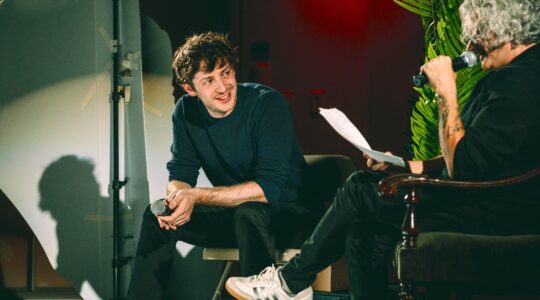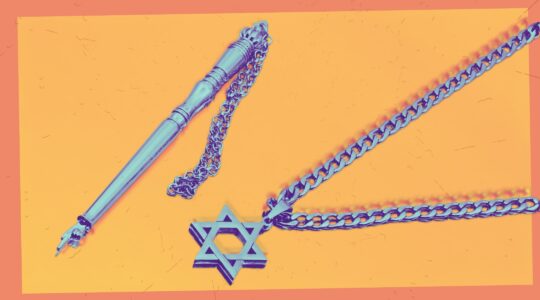The revelation that one of the most respected rabbis in our community is alleged to be an abusive peeping tom has come as a shock. Unfortunately, the allegations against Rabbi Barry Freundel in Washington, D.C., are but the latest in a long string of abuse cases that have come to light over the past few decades. The one thing that they all have in common is that they all had warning signs. There were always things that did not seem right or behavior that was bizarre. Many people were holding pieces of the puzzle but there was no one to put them all together. This is the crux of the crisis facing our community. How do we protect our children and institutions from those who seek to abuse others?
When I attended Harvard Business School’s course on nonprofit strategic planning, my main takeaway was its seeming obsession with case study. Every day we covered five to six case studies on nonprofits that did things right, and many others that did things very wrong. The goal, which I grew to appreciate by the course’s end, was to learn from others’ real-world experience. In that spirit I offer a first-hand look at how the National Conference of Synagogue Youth (NCSY), a division of the Orthodox Union, worked to repair the damage from the Rabbi Baruch Lanner abuse scandal and moved forward. It wasn’t so simple.
In the wake of the 2000 Jewish Week expose by Gary Rosenblatt on the decades’-long abusive behavior by Rabbi Lanner, who was NCSY’s director of regions, the OU formed a commission to investigate. It became clear very quickly that many lay and professional leaders knew about the abusive behavior, but everyone claimed they only knew a piece of the puzzle. No one was putting it all together. Thus was born the NCSY ombudsman. A position was created so that all complaints would be filtered through one person, independent of the organization and therefore unbiased.
Fast forward to January 2005. That was when I became the international director of NCSY and assumed responsibility for the ombudsman. At the time the system was in place but left much to be desired in terms of accomplishing its goals. I realized that when I was handed a folder full of ombudsman complaints. Unfortunately, the files were generally incomplete. The complaints mostly consisted of emails that had been put in a file. There was no systematic filing system for abuse complaints. More importantly, there was no conclusion ascribed to the complaints. It was impossible to know what had happened and how each issue was resolved. This is not uncommon in the Jewish community, where there is much turnover of staff and little institutional memory.
Aside from the filing issues, another pressing matter was brought to my attention. When the NCSY ombudsman was put into place, there were no guidelines in terms of what fell within the discretion of the overseer. Often, after an employee was let go from the organization, inevitable anonymous complaints would be submitted to the ombudsman complaining about that person’s supervisor. This wasted a lot of time and effort on things that should have been handled by the human resources department.
The largest problem, as it turned out, was with the ombudsmen themselves. NCSY turned to a group of wonderful, selfless social workers. The office of ombudsman was supposed to ascertain if there was an issue and what the next steps should be. In practice, out of the goodness of their hearts, they started to counsel and guide those involved. But this biased the ombudsmen in terms of what needed to be done with a complaint. They lost their objectivity.
It became clear we needed to reform the ombudsman process as soon as possible. We hired an associate national director of NCSY, who took over the supervision of the ombudsman process and steered employment-related complaints to the OU’s human resources department. Anything of a sexual nature was sent to the ombudsman. Immaculate records were kept on all cases from start to finish so that future generations would know exactly how each complaint was handled.
At that time I was introduced to Dr. Sylvan Schaffer, who I came to consider an unsung hero of the Jewish people. Schaffer was both a psychologist and an employment lawyer. He understood all sides of every issue we encountered.
Schaffer would be our first call to determine what we should do in each case we encountered. His decision was law. He was never paid for this work and was therefore not biased. Most importantly, although he is an incredibly sensitive human being, he never got involved on a counseling level. He always set out to determine the facts and instructws us how to move forward.
In this way we handled all cases, and even if the suspicious behavior was not deemed reportable or actionable, it was recorded. Therefore, if something came to our attention later regarding someone we investigated, we could see a much larger picture.
Once, we received a complaint about an educator who volunteered for NCSY. This was the second complaint of a similar nature. While neither grievance could be verified, we asked the person to no longer attend NCSY events. In determining our legal and moral obligations in regards to informing the school where he worked, we decided to call the principal and tell him the truth: we had two complaints that we could not verify, we said, suggesting he be vigilant regarding the individual going forward. Memorably, the principal was furious with our decision to no longer allow his employee at our events. Without any due diligence, he decided this individual was innocent.
This story illustrates the very real and vexing problem that the Jewish community has before it. There are no designated addresses to report suspected abuse across communal boundaries. When the initial complaints were made against Rabbi Freundel, the investigation should have included mental health professionals or a communal ombudsman. As a result, many strange behaviors, such as requiring female converts to perform “practice dunks” in the mikvah, may have come to light. This certainly would have set off alarm bells and perhaps stopped this alleged predator in his tracks.
We currently have no mechanism to track abusers as they hide their tracks by moving jobs or preying on the weak in our community. For a community as organized and strong as we are, this is inexcusable. A process and destination must be established as a clearinghouse for all suspicions of abuse. We need a place to keep all the puzzle pieces so no one can say, “if only we had known.”
Such an effort will require unprecedented levels of cooperation across Jewish communal lines. Organizations will have to support this effort morally and financially. It must not be viewed as a fringe movement or it will fail. We must partner with our elected officials and law enforcement. Governance must be constituted with representatives from across the Jewish community.
We must come together based on concern for the safety of our children, to make clear that abuse will no longer be tolerated. This is not just a conversion or mikvah problem. It is a Jewish problem. The only way change will happen is if we all come together, committed to making our Jewish community safe.
Rabbi Steven Burg is the former international director of NCSY and managing director of the OU. He currently serves as the eastern director of the Simon Wiesenthal Center and is a member of the executive committee of the RCA, the Rabbinical Council of America.
The New York Jewish Week brings you the stories behind the headlines, keeping you connected to Jewish life in New York. Help sustain the reporting you trust by donating today.




